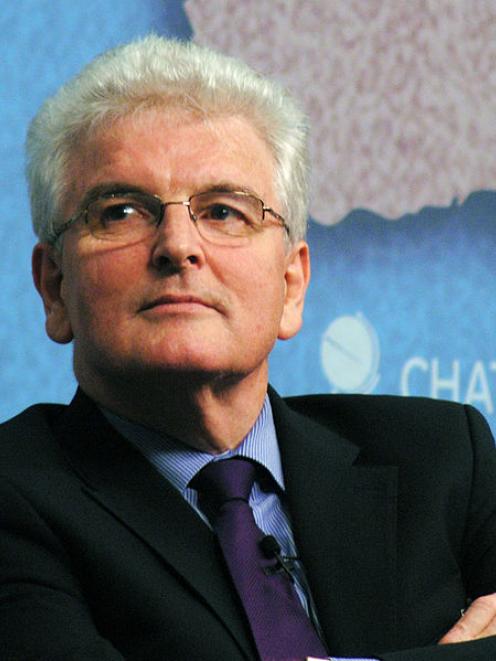
One of the most iconic images of World War 1 is the deserter - heartlessly tried for cowardice, blindfolded and bound to a post, facing the firing squad.
In all, 306 soldiers from British and Imperial forces were executed for cowardice or desertion.
But since the war's end, there's been a lingering feeling that this was an injustice. Not least because many of these men may have been suffering from shell shock.
A campaign to clear their names was finally successful in late 2006, when the British government granted pardons to all 306.
Des Browne, who was the UK defence secretary at the time, said ''the circumstances were terrible'' and they were ''victims of the war''.
Shell shock was a creation of the war, a seemingly new phenomenon produced by industrialised warfare.
Never before had so much explosive power been available to the antagonists. Never before had troops been subjected to so much stress for so much time.
Indeed, the ''Great War'' was a turning point in understanding the nature of trauma and its effects on those that fought in battle.
Arguably, yesterday's shell shock became today's post-traumatic stress disorder, and the lessons learnt by the various armies had a direct impact on treating the mentally battle-scarred in future conflicts.
Shell shock, or war neurosis as it was first called, was identified by all combatant countries early in the conflict.
But it received its name from the psychologist Charles Myers writing to The Lancet in 1915.
Conservative estimates put the number of soldiers in the British and Imperial armies treated for shell shock at more than 80,000 but many, many more suffered than were treated.
The symptoms of shell shock were almost identical to those identified by neurologists and psychologists in male hysterics before the war - loss of speech; wild-staring eyes; facial tics and exaggerated limb movements, including the inability to walk properly; the utterance of a single word, like ''bomb'', or a loud sound, triggering full paralysis; and even fugue states, where the sufferer unconsciously wandered off, with no knowledge of who they were, where they were or what they were doing.
But there were conflicts over both the causes and treatment of shell shock.
The mind sciences have always struggled to work out whether mental disorders are caused by biological or psychosocial factors.
And, over history, the pendulum has swung one way and then the other.
It was no different in the case of case of shell shock.
Initially, some argued the condition was the direct result of the percussive effects of the newly-developed and considerably more powerful high explosives, which had functionally damaged the nervous system of the sufferer.
Coming from an eugenics perspective, others argued it was a form of hysteria resulting from hereditary weakness, and that sufferers came from biologically unfit stock so possessed a ''degenerate'' nervous system.
Still others, such as the psychologist Charles Myers and the psychiatrist W. H. R. Rivers, would claim it was the result of mental trauma or prolonged stress.
Each of these positions had a direct impact on the way troops were treated.
And just as there were multiple explanations for the cause of shell shock, there were divergent methods of treating it.
The Canadian psychiatrist Lewis Yealland is emblematic of the biological psychiatrists - physicians who saw degeneracy as the root cause of shell shock and physical methods as the route to a cure.
In Yealland's 1918 book, Hysterical Disorders of Warfare, we see him treating a private soldier suffering from mutism.
Yealland's aim was to recondition the patient's behaviour through physical means - violent electric shocks and even, occasionally, cigarette burns.
Yealland repeatedly shocked one patient, each time with an increasing current, until he succeeded and could pronounce a cure.
Lest you think that this is exceptional, it should be noted that this form of treatment was common among all the nations that fought in the war.
Rivers had been influenced by the model of mental trauma developed by Pierre Janet and Sigmund Freud. He believed psychotherapy was the best method of treating shell shock.
And so, in the old Craiglockhart Hydro, on the outskirts of Edinburgh, he and other colleagues treated officers, like the poet Wilfred Owen, accordingly.
Unlike Yealland's physical methods, not only did they get troops back to the front line, those they treated were far less likely to break down again under fire.
By the end of the war, a new model for treating shell shock had emerged: a combination of psychotherapy and occupational therapy.
Shell-shock victims sent home to the military hospital Netley would be treated through talking, and as they recuperated, be put to work on the hospital's farm, or take part in other activities, like basket-weaving.
After the war, a committee appointed to look into shell shock rebutted the physical treatment meted out by the likes of Yealland.
Instead, it recommended that psychotherapy be the principal method for dealing with mentally-scarred soldiers.
And while the recommendations were too late for those executed, or for the surviving victims of psychiatrists like Yealland, in future there were would be a growing acknowledgement that the trauma of war had nothing to do with biological weakness and everything to do with the intolerable stresses of frontline combat.
-theconversation.com/au
Dr James Bradley is a lecturer in the history of medicine and life sciences at the University of Melbourne









